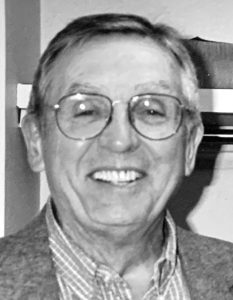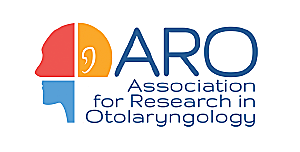
James David Miller, 90, of Bloomington died peacefully at Indiana University Health Hospice House on August 2, 2020. With him were his daughter Valerie and the loving concerns of many relatives and friends who could not be physically present because of the current pandemic.
Dr. Miller was raised in West Allis, Wisconsin in a family with three older siblings — Patricia, Joseph and Harry. He attended the University of Wisconsin, graduating with a bachelor’s degree in experimental psychology in 1951. He received his graduate training in that same field at Indiana University in Bloomington, earning his Ph.D. in 1957. He had a long and productive career in the field of hearing and deafness and also in the study of speech communication. During a postdoctoral appointment at Indiana University he completed a pioneering study of the damage to the structures of the ear caused by intense noise and the resulting permanent hearing loss. That work had a major influence on the establishment of the CDC/OSHA damage-risk criteria, noise levels above which businesses are legally required to provide hearing protection to employees.
In 1959 Jim was recruited by Central Institute for the Deaf in St. Louis, MO, where he extended his research to studies of speech perception by persons with normal hearing and those with hearing loss. During more than 40 years at CID Jim served as mentor to dozens of graduate students and post-doctoral fellows, many of whom went on to impactful careers at major research centers throughout the US. He rose from director of one of the research labs at CID to appointments as Director of Psychological Laboratories and as Director of Research. In 2003 Jim retired as Research Director Emeritus of CID and as Adj. Prof. of Otolaryngology, Speech and Hearing Sciences, and Psychology at Washington University, St. Louis.
In 2005, Jim returned to Bloomington where he joined Communication Disorders Technology, Inc. as Principal Scientist. At CDT he continued to conduct NIH-funded research, concentrating on training hearing-aid users to recognize speech more efficiently. This work grew into a multi-university study in which Jim coordinated the efforts of university centers, each using the Speech Perception Assessment and Training System (SPATS) that had been developed by Jim and his colleagues. Most recently, he devoted time to analyzing the data from this study and published two major articles based on his theoretical modeling of the associations between recognizing the elements of speech and overall understanding of meaningful sentences. He rejoined Indiana University as an Adjunct Professor of Speech and Hearing Sciences and taught occasional graduate courses.
Jim’s exceptional mentoring of students must have been partly a result of the experiences he had with his own mentors, Harry Harlow (known for “mother love in monkeys”) at the University of Wisconsin, who called Jim the best student he had ever had, and James Egan at Indiana University, who started Jim on his lifetime study of hearing and deafness.
In addition to an internationally recognized scientific career, Jim also found time for a range of other activities. He was an avid tennis player through his 80’s, and earned state rankings in his age group. He served as president of the AAA Municipal Golf and Tennis Club in Forest Park, St. Louis, where he helped to integrate that formerly all-white organization. He was an ardent student of US history, particularly of the Civil War, and had trod many of the battle fields of that conflict. He believed in striving for a more perfect union, and as a young man he participated in campus protests to demand equal opportunities and rights for Black students at Indiana University. Into his 80’s, he walked from house-to-house to get out the vote.
Jim is survived by his former wife Dolores, his daughters Valerie and Lucia (David Hanlon), of St. Louis, his son Harry of New York City and his granddaughter Rose Hoffman of Los Angeles.
A private memorial will be held later this year.
Memorial contributions may be made to Indiana University Foundation to support research on hearing loss in the Department of Speech, Language, and Hearing Sciences. Make gifts payable to “IU Foundation” and mail to IU Foundation, P.O. Box 6460, Indianapolis, IN 46206-6460. Please indicate “In memory of Dr. James D. Miller.” Alternately, contributions may be made to the NAACP Legal Defense Fund or Emily’s List.
Messages of condolence may be expressed at IndianaGreenBurials.com
